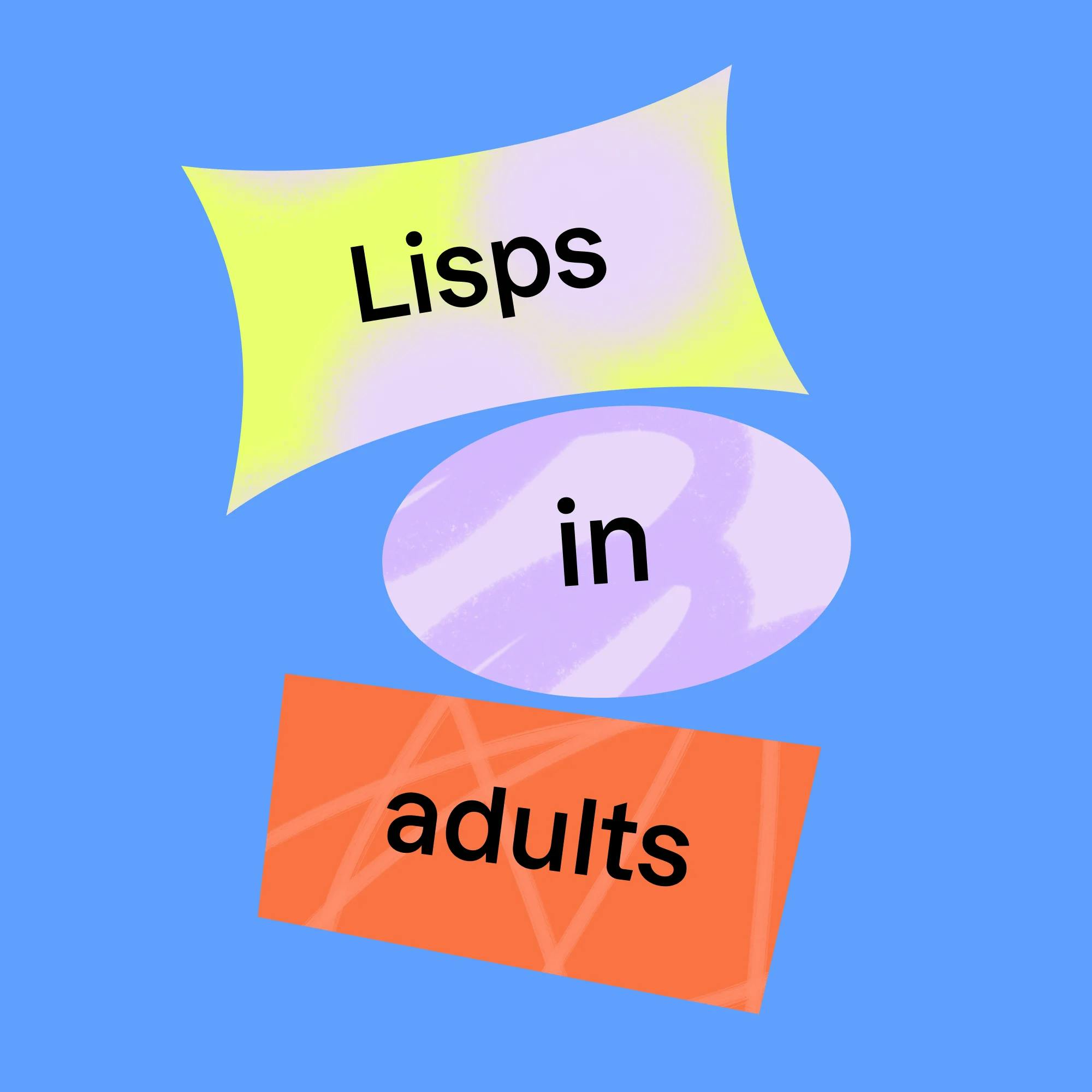Lisps are some of the most common speech impediments. It’s estimated that about 23% of people who receive speech therapy do so because of a lisp. But what exactly is a lisp, and how do you know if you have a lisp?
What is a lisp?
Many people refer to different types of speech impediments as lisps. But a lisp is a very specific type of speech error. A lisp refers to a person’s difficulty in pronouncing the /s/ or /z/ sounds. This is because of an incorrect motor pattern of tongue positioning.
When a person has a lisp, they are positioning their tongue in a way that blocks the airflow needed to make the /s/ and /z/ sounds. This distortion of airflow creates the lisping sound we are familiar with.
The /s/ and /z/ sounds are the only speech sounds associated with lisps. If someone has trouble pronouncing a sound like /r/ or /l/, this is not a lisp, but rather an articulation error.
What does a lisp sound like?
There are actually four different types of lisps. Let’s review what they are and what these lisps sound like.
1 Interdental, or frontal, lisp
An interdental lisp occurs when the tongue is pushed forward between the teeth. The person makes a “th” sound when trying to pronounce /s/ or /z/.
2 Lateral lisp
A lateral lisp occurs when the sides of the tongue are raised. This causes air to escape around the sides of the tongue. A lateral lisp is often described as sounding “slushy.”

3 Dentalized lisp
A dentalized lisp is similar to an interdental lisp because the tongue pushes forward. However, instead of the tongue pushing between the teeth, it pushes against the teeth.
4 Palatal lisp
This type of lisp occurs when the tongue pushes up against the soft palate, or the roof of the mouth. A palatal lisp isn’t as common as the other types, but it can still make it hard to produce the /s/ and /z/ sounds.
Who is affected by lisps?
Both children and adults can have a lisp. It’s important to note that an interdental lisp can be a normal part of childhood development.
An interdental lisp can be a normal part of childhood development.
A clinical review was done in 2020 to assess at what ages a child typically produces each speech sound correctly. The studies in the review showed that children can typically pronounce /s/ and /z/ correctly by 4 years, 11 months of age. This means that up until that point, an interdental lisp could technically be considered a normal part of development.


How do you know if your child has a lisp?
If you notice that your child has trouble producing /s/ sounds, /z/ sounds, or both, they may have one of the four types of lisps. If you can’t quite tell which sound they’re having trouble with, you can try giving your child words that contain /s/ and /z/ and asking them to repeat them. Listen to how your child says each word. If needed, write down their pronunciations on a piece of paper so you can refer back to it.
You may need to talk with a speech therapist to determine exactly what’s going on with your child’s speech. A speech evaluation can give you the answers and a plan to improve your child’s communication.


Can a lisp go away on its own?
Lisps can go away on their own. However, if a child's lisp persists past age 5, speech therapy may be needed to correct it.
If a child's lisp persists past age 5, speech therapy may be needed.
Adults who did not receive speech therapy or learn to produce /s/ and /z/ sounds correctly may have a lisp that lasts into adulthood. This speech pattern is much more of a habit for them, since they’ve spoken this way their whole life. But that doesn’t mean that they can’t fix their lisp if they’d like to. Speech therapy can help adults as well as children. If you’re an adult who feels motivated to learn strategies to get rid of your lisp, then speech therapy is for you!


How can speech therapy improve a lisp?
A speech-language pathologist, also known as a speech therapist, can help both children and adults with a lisp. Through a detailed speech evaluation, the speech therapist can determine which type of lisp a person has and create a program to target placement of the tongue.
Speech therapy for a lisp works to train the positioning of the tongue muscles to produce a clear /s/ and /z/ sound. Treatment may focus on other speech sounds, or phonemes, as well, depending on the person’s needs.
The speech therapist will provide different exercises for the person to do during sessions, as well as at home throughout the week. Home practice is key in improving a lisp! A lisp is an incorrect motor pattern, and the new, correct motor pattern has to be practiced in order to be established.
For some people, a lisp affects their confidence and their quality of life. Speech therapy can make a big difference. If you or a loved one is concerned about speech, contact a speech therapist for an evaluation.
How Expressable Can Help
Concerned your child isn't reaching age-expected milestones? Looking for communication support from a professional? Expressable is a national online speech therapy practice serving children and adults. We treat all major areas of communication and feeding, offer flexible hours including evenings and weekends, and accept most major health insurance plans. We’re proud to have earned more than 3,000 5-star reviews from our clients (4.9/5 average).
Our therapy model is centered on parent and caregiver involvement. Research proves that empowering caregivers to participate in their loved one’s therapy leads to better outcomes. That’s why we combine live, 1-on-1 speech therapy with personalized education and home practice activities for faster progress.
Communication is more than words. It’s how we share how we feel and show who we are. We’re here to help you or your child do just that.

 Abby Barnes, M.S., CCC-SLP
Abby Barnes, M.S., CCC-SLP












